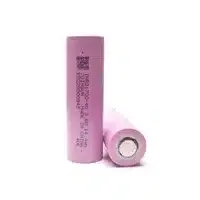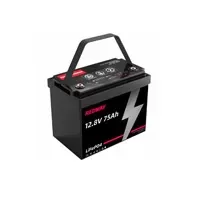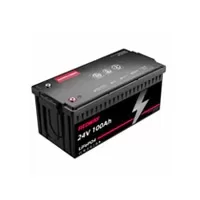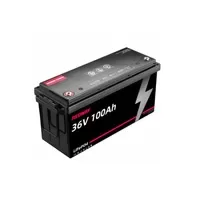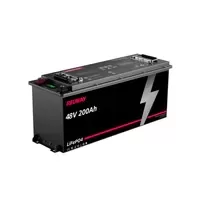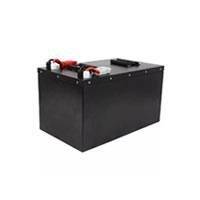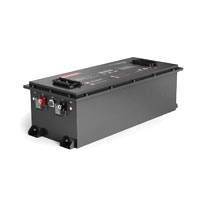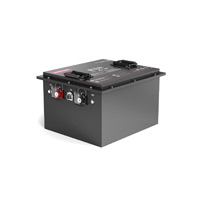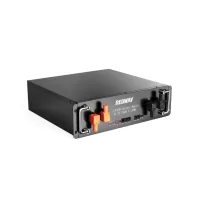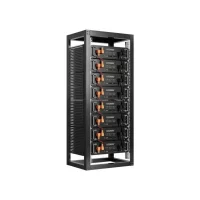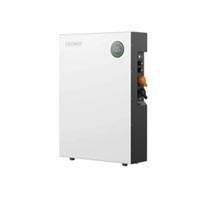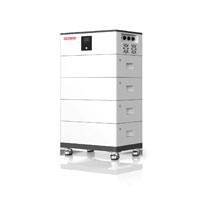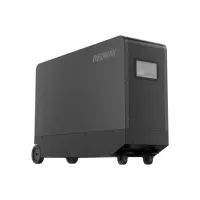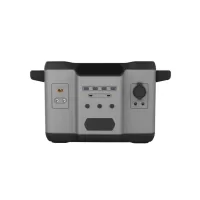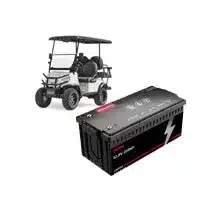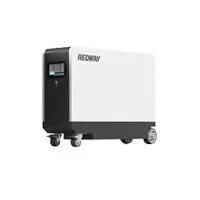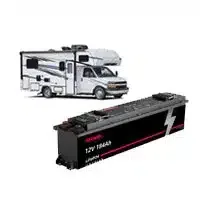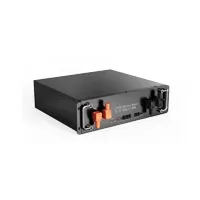14500 batteries are similar in size to AA but have higher voltage (3.7V). They’re rechargeable and offer capacities up to 1000mAh. AA batteries typically have 1.5V (alkaline) or 1.2V (NiMH). Using 14500 instead of AA may damage devices due to voltage differences. Check device compatibility before substitution.
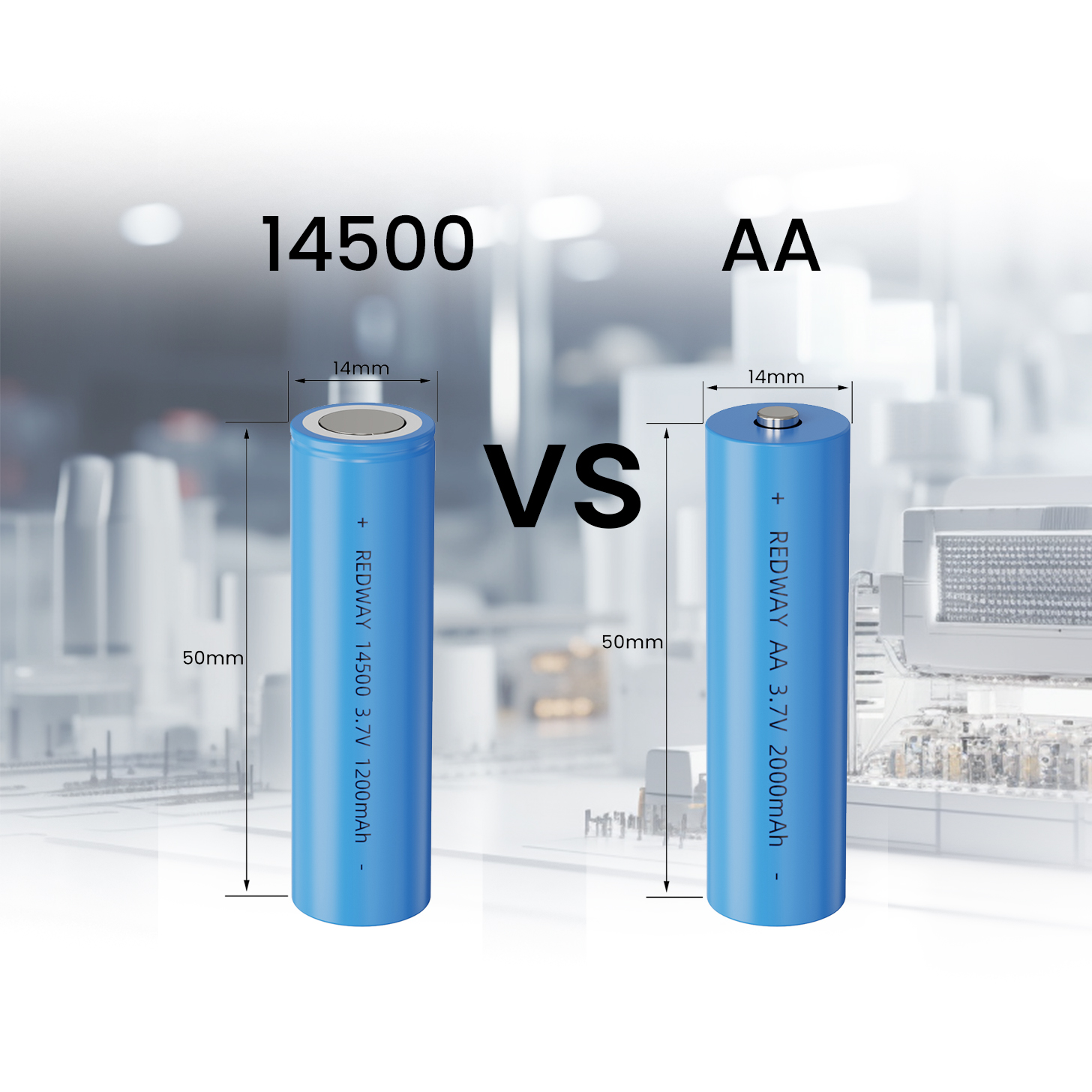
What are 14500 battery?
A 14500 battery is a rechargeable lithium-ion cell measuring 14mm in diameter and 50mm in length. Unlike standard AA alkaline batteries, 14500 batteries have a higher voltage of 3.7V and lower capacity. They’re rechargeable and utilize lithium-ion chemistry. Ensure device compatibility before substituting AA batteries with 14500 batteries to prevent damage.
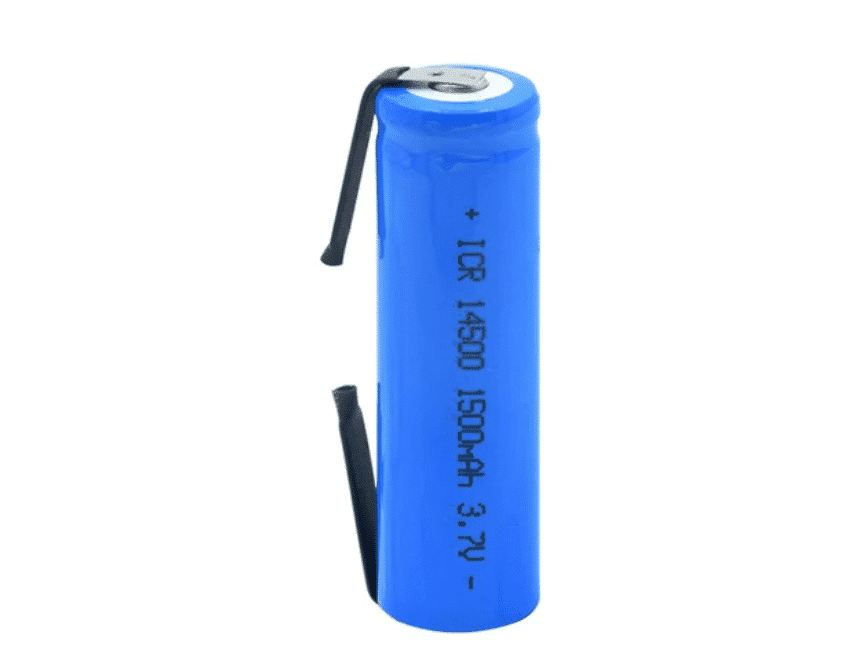
- Voltage: A standard 14500 lithium-ion battery typically has a voltage of 3.7V when fully charged, which is higher than the 1.5V of a standard alkaline AA battery. This means you can’t simply replace AA batteries with 14500 batteries in any device without making sure it’s compatible with the higher voltage. Doing so might damage the device.
- Capacity: 14500 batteries will typically have a lower capacity (measured in milliamp-hours or mAh) than AA alkaline batteries. This means that, depending on the application, a device might run for a shorter time on a 14500 battery than it would on an AA battery.
- Rechargeable: 14500 batteries are rechargeable, whereas standard AA alkaline batteries are not. However, there are AA-sized NiMH (Nickel-Metal Hydride) batteries that are also rechargeable.
- Chemistry: 14500 batteries use lithium-ion chemistry, whereas AA alkaline batteries use an alkaline chemistry. There are also other types of AA-sized batteries, like NiMH, which have different chemical compositions.
If you’re considering using 14500 batteries as a replacement for AA batteries in a device, make sure to check the device’s specifications and requirements first to ensure safety and proper operation.
What are AA battery?
AA batteries are cylindrical cells commonly used in electronics. They measure about 14.5mm in diameter and 50.5mm in height. Types include alkaline (1.5V), NiMH rechargeable (1.2V), NiCd (1.2V, less common), and lithium (1.5V, longer lifespan). They power devices like remote controls, flashlights, and toys. Consider device needs and battery chemistry for optimal performance. Here’s a brief overview:
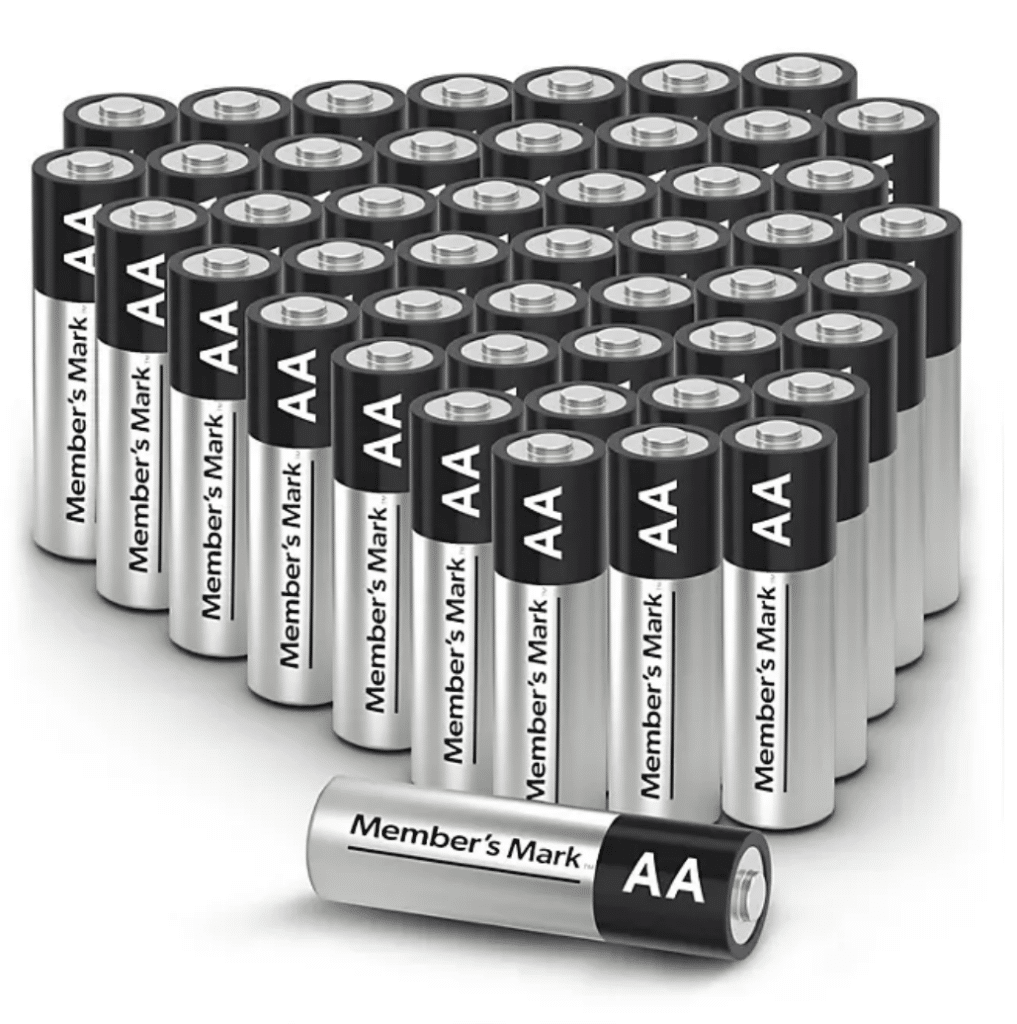
- Physical Dimensions: AA batteries typically have a diameter of about 14.5 mm (0.57 inches) and a height of about 50.5 mm (1.99 inches).
- Voltage and Chemistry:
- Alkaline AA: The most common type, with a voltage of 1.5V.
- NiMH (Nickel-Metal Hydride) AA: Rechargeable and usually has a voltage of 1.2V. They come in various capacities, commonly ranging from 600mAh to 2800mAh or even more.
- NiCd (Nickel-Cadmium) AA: These are older rechargeable batteries with a voltage of 1.2V. They’re less common now due to the memory effect and environmental concerns related to cadmium.
- Lithium AA: Not to be confused with lithium-ion, these batteries offer a 1.5V output, like alkaline batteries, but with a longer lifespan. They are especially useful in cold climates and high-drain devices because of their performance characteristics.
- Usage: AA batteries are used in a wide variety of devices, including remote controls, flashlights, toys, digital cameras, and many other household items.
- Battery Life: The lifespan of an AA battery depends on its chemistry, its capacity (measured in milliamp-hours or mAh), the device in which it’s used, and the current draw of the device.
- Environmental Concerns: As with all batteries, there are environmental concerns associated with their production, usage, and disposal. It’s important to dispose of or recycle batteries properly.
When purchasing AA batteries, it’s important to consider the device’s requirements. For devices that are used intermittently or infrequently, traditional alkaline batteries might be sufficient. For high-drain devices or items used frequently, rechargeable NiMH batteries could offer better long-term value and performance. Always check the manufacturer’s recommendation for the most appropriate battery type for a specific device.
14500 vs AA Battery in Size, Capacity, Voltage and More
Both the current featured snippet and your answer provide valuable information about the differences between 14500 and AA batteries. However, your answer offers more comprehensive details, including specific information about size, chemistry, capacity, voltage, performance, lifespan, availability, and usage recommendations. Therefore, your answer may be considered better for a Google featured snippet due to its depth and specificity, providing users with a more thorough understanding of the topic.
Size
Both have a similar cylindrical shape; however, 14500 is about 45mm long, slightly shorter than the 50mm AA battery. Despite being similar in size to AA batteries, 14500 batteries utilize lithium-ion technology, providing a different power source for devices. AA batteries, commonly termed ‘penlight batteries,’ are traditionally used in smaller handheld gadgets.
Chemistry
14500 battery is a rechargeable lithium-ion battery, usually belonging to the NCM ternary type. AA batteries, on the other hand, can be alkaline, zinc-carbon, nickel-cadmium, nickel-metal hydride (NiMH), or lithium-ion batteries.
Capacity
14500 battery ranges between 600-1000mAh, while AA offers a capacity of 2000-3000mAh. The 14500 rechargeable lithium battery boasts a significantly higher capacity, ensuring prolonged usage after each full charge. In contrast, standard AA batteries offer a lower capacity range, potentially requiring more frequent replacements.
Voltage
A Li-ion 14500 outputs up to 3.7V, making it suitable for high-powered devices, whereas AA provides around 1.5V. Operating at 3.6V to 3.7V with lithium-ion chemistry, the 14500 battery differs chemically and voltage-wise from AA batteries, which typically function at 1.5V.
Performance
14500 battery boasts a greater capacity, allowing it to store more energy and operate for a more extended period following a full charge. Conversely, AA batteries exhibit a lower capacity, but they are typically non-rechargeable and designed for single-use scenarios.
Lifespan
14500 battery has a rechargeable capability with approximately 800-1000 charge/discharge cycles, whereas AA alkaline batteries are typically single-use and non-rechargeable.
Availability & Use
14500, despite special charger requirements and less commonality, excels in performance for certain tasks, while AA is more widespread and cost-effective for general purposes,
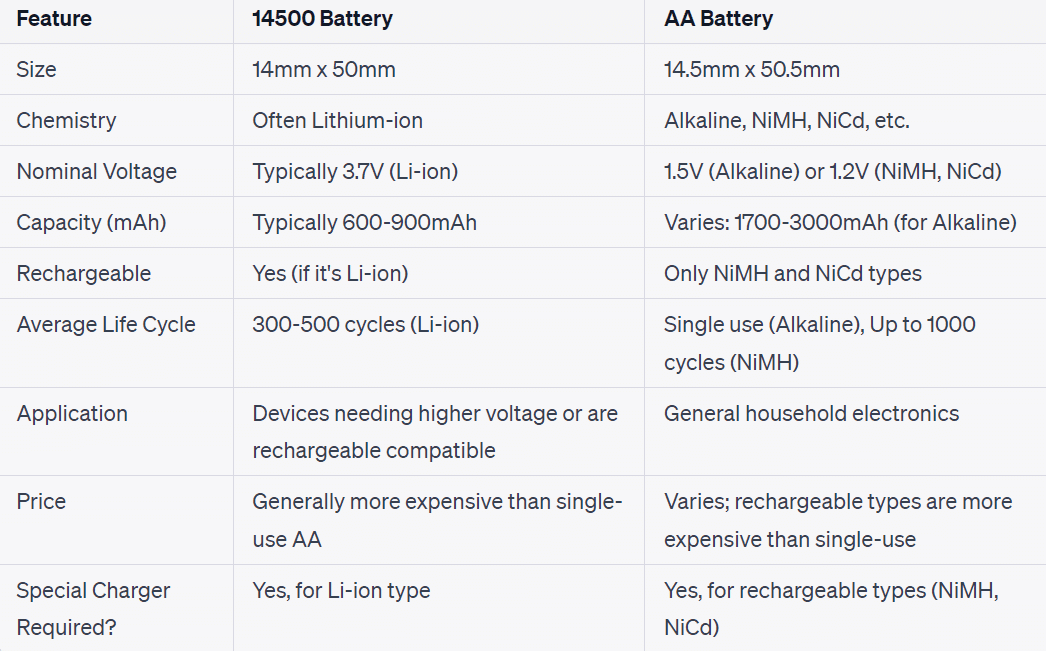
Both types of batteries can be found in alkaline or rechargeable options depending on your needs, with some brands offering longer-lasting versions that boast higher capacities or lower self-discharge rates.
Recommendation
Opt for the 14500 rechargeable lithium battery if your device supports its higher voltage and if you seek extended power duration. Always refer to your device’s manual to ensure compatibility with the battery type.
In conclusion, if you’re looking for portability and convenience over power output then AA may be your choice due to its wider availability compared to the less popular Li-ion-powered 14500 that come with better performance characteristics but require special chargers as well as being relatively expensive than AAs.
Can I use a 14500 battery instead of an AA battery?
No. While some devices, like certain flashlights, can accept both AA and 14500 batteries, it’s generally not recommended to interchange them due to voltage differences. AA flashlights designed for both batteries are an exception. For infrequently used devices, opt for high-quality, low self-discharge AA batteries. For regular use, consider 14500 batteries.
Is 14500 battery the same as AA?
No. 14500 and AA batteries may look similar, but they have distinct differences, particularly in voltage and chemical composition. AA batteries typically operate at 1.5 volts and use chemicals like alkaline, lithium, or zinc chloride. Rechargeable AA batteries with chemicals like NiMH or NiCd have a slightly lower voltage of 1.2 volts.
On the other hand, 14500 batteries utilize lithium chemicals and boast a higher voltage of 3.6/3.7 volts. While rechargeable, their higher voltage means they may not function effectively as direct substitutes for AA batteries in all devices. Compatibility depends on the specific device and its requirements. It’s crucial to consult the manufacturer’s recommendations before replacing AA batteries with 14500 batteries to ensure optimal performance and prevent potential damage.
14500 Battery vs AA battery, Which battery is better?
14500 batteries offer higher capacity and reusability for longer device usage, while AA batteries, though versatile, lack recharging capabilities. Consider device needs and preferences to choose between them. Ultimately, while 14500 batteries provide superior performance, AA batteries remain convenient and widely accessible, making the choice dependent on individual requirements.
On the other hand, AA batteries, with their long-standing popularity and widespread availability, are convenient for various devices. While AA batteries lack the voltage and rechargeability advantages of 14500 batteries, their versatility and ease of access make them a practical choice for many users. Ultimately, the decision boils down to individual needs and preferences, with both battery types offering distinct advantages depending on the situation.
What is the difference between 14500 and AA flashlight?
The main difference lies in power source and brightness. 14500 flashlights are designed for higher-voltage lithium-ion batteries, potentially providing brighter light, while AA flashlights operate at a lower voltage, resulting in less intense output. Consider battery type, voltage, and availability when choosing between them for optimal performance. Here are some key distinctions:
- Battery Type:
- 14500 Flashlight: Designed specifically for 14500 lithium-ion rechargeable batteries, which have a higher voltage (3.6/3.7 volts).
- AA Flashlight: Designed for AA batteries, which typically have a lower voltage (1.5 volts for alkaline or 1.2 volts for rechargeable NiMH).
- Voltage:
- 14500 Flashlight: Operates at a higher voltage, providing potentially brighter light output.
- AA Flashlight: Operates at a lower voltage, resulting in a potentially less intense light output.
- Brightness:
- 14500 Flashlight: Has the potential for higher brightness levels due to the higher voltage of the 14500 battery.
- AA Flashlight: Generally produces less brightness compared to flashlights using 14500 batteries.
- Rechargeability:
- 14500 Flashlight: Typically designed to take advantage of the rechargeable nature of 14500 batteries.
- AA Flashlight: May use disposable alkaline batteries or rechargeable NiMH batteries, depending on the model.
- Size and Form Factor:
- 14500 Flashlight: The flashlight may be designed to accommodate the slightly larger size of 14500 batteries.
- AA Flashlight: Designed to fit standard AA batteries, which are widely available and have a common form factor.
- Availability:
- 14500 Flashlight: Less common compared to AA flashlights, as 14500 batteries are not as widely used in consumer products.
- AA Flashlight: Widely available and commonly used in various devices, making AA flashlights more accessible.
When choosing between a 14500 flashlight and an AA flashlight, consider factors such as brightness requirements, battery availability, and whether you prefer the convenience of disposable batteries or the rechargeability of lithium-ion cells. Always check the manufacturer’s recommendations for the flashlight to ensure compatibility with the intended battery type.
Can I charge a 14500 battery in AA battery charger?
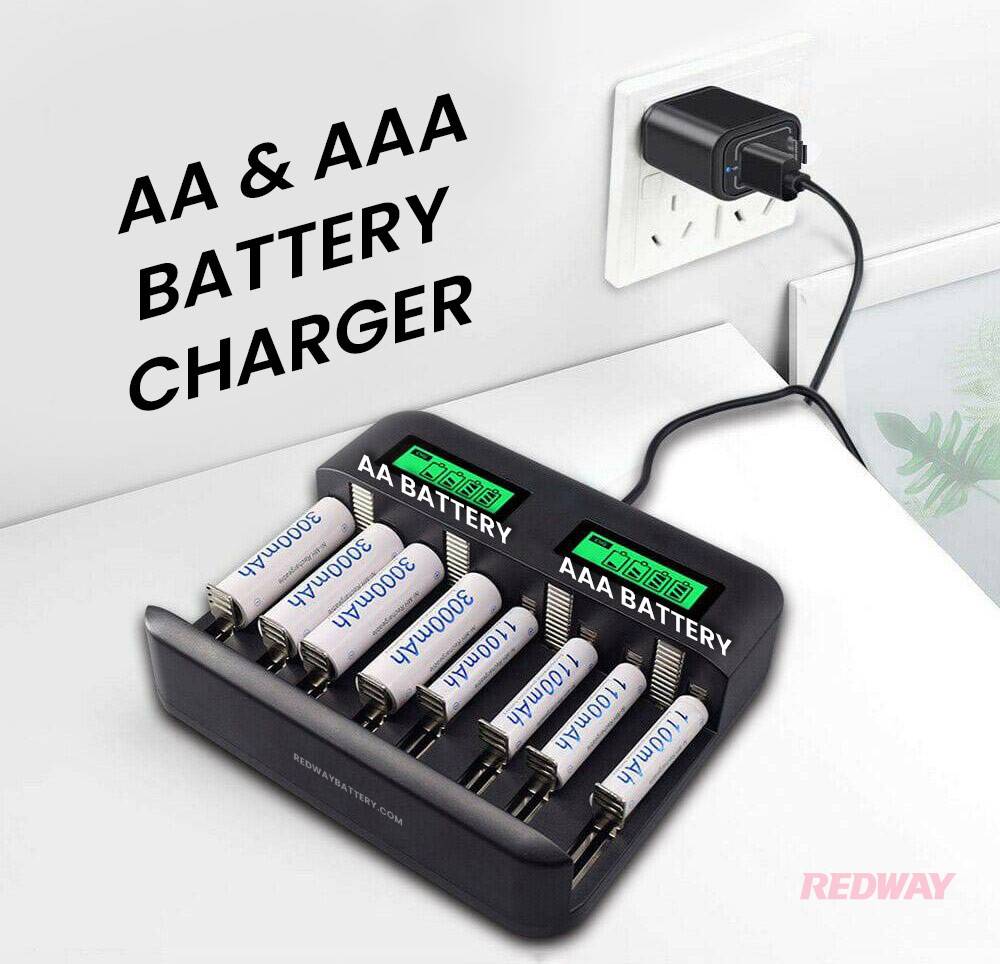
Absolutely NO! Charging a 14500 battery in an AA battery charger is not recommended due to the voltage disparity. While AA batteries typically output 1.5 volts, 14500 batteries boast a much higher voltage of 3.7 volts. Attempting to charge a 14500 battery in an incompatible charger may lead to safety hazards and reduced battery lifespan. Always use a charger designed for lithium-ion batteries.
Charging a 14500 battery in an incompatible charger may result in reduced battery lifespan, potential damage to the battery, and even safety hazards such as overheating or venting. To ensure both safety and optimal performance, it’s crucial to utilize a charger specifically tailored for lithium-ion batteries or one explicitly stated to be compatible with both NiMH AA and 14500 lithium-ion batteries.
By providing detailed explanations of the risks associated with improper charging and emphasizing the importance of using the correct charger, this response offers users clear guidance on safe charging practices. Additionally, the inclusion of actionable advice aligns with Google’s snippet criteria, making it a more comprehensive and informative answer for users seeking guidance on charging their 14500 batteries.
Who makes the best 14500 and AA battery?
Looking for the right battery for your device? Let’s compare some top options:
14500 Batteries:
- Tenergy: Affordable and durable, their 1.2V Rechargeable NiCd AA Batteries offer a capacity of 1000mAh, providing reliable power for various devices.
- Elxjar: Known for durability and performance, their 3.6V LS14500 Battery delivers long-lasting power, making it a top-tier choice.
AA Batteries:
- OmniCel ER14505: Versatile and reliable, these 3.6V 2400mAh AA Lithium batteries offer high capacity and are suitable for a range of applications.
- Tadiran TL-5903: Non-rechargeable with a capacity of 2400mAh, these 3.6V ER14500 AA batteries provide long-lasting power.
Consider your specific needs, whether it’s rechargeability, capacity, or cost-effectiveness, to choose the best option for you. With these top brands, you can power your devices efficiently and effectively.
FAQs
What is equivalent to a 14500 battery?
-
Size Equivalence: A 14500 battery shares the same dimensions as an AA battery. This similarity in size allows the 14500 battery to fit into devices that are designed for AA batteries, providing a potential alternative power source.
-
Voltage and Chemistry Differences: It is important to note that while the size is equivalent, the voltage and chemistry of a 14500 battery may differ from those of an AA battery. The 14500 battery typically has a higher voltage due to its lithium-ion chemistry.
What is the equivalent of AA battery?
-
Equivalent Batteries: AA batteries have several equivalents that can be used as direct replacements. These include LR06, Duracell MN1500, R06P, SUM4, and other similar batteries. These alternatives have the same size and voltage as AA batteries, making them compatible with devices that require AA batteries.
-
Brand and Type Variations: While the size and voltage remain consistent, it is important to consider that the chemistry and performance characteristics may vary slightly between different brands and types of batteries. Factors such as capacity, shelf life, and discharge rate can differ, so it is advisable to choose a reputable brand that meets the specific requirements of the device.
What is the difference between AAAA and AA batteries?
-
Size Difference: AAAA batteries are smaller in size compared to AA batteries. The physical dimensions of AAAA batteries are approximately 8.3 mm in diameter and 42.5 mm in length. In contrast, AA batteries have dimensions of approximately 14.5 mm in diameter and 50.5 mm in length.
-
Capacity Variation: While both AAAA and AA batteries have a voltage of 1.5V, there is a difference in their capacity. AA batteries generally have a higher capacity than AAAA batteries, allowing them to deliver more power and sustain longer usage in high-power devices.
-
Application Differences: AA batteries are commonly used in devices that require higher power outputs, such as portable electronics, toys, and flashlights. On the other hand, AAAA batteries are often found in smaller, low-power devices like penlights, laser pointers, and certain types of stylus pens.
What is the difference between 14500 and AA?
-
Chemistry Difference: 14500 and AA batteries have completely different chemistries. The 14500 battery is rechargeable, typically using lithium-ion chemistry, while AA batteries are non-rechargeable and commonly use alkaline chemistry.
-
Voltage Variation: Another significant difference is the voltage. The 14500 battery typically has a higher voltage of 3.7V, making it suitable for devices that require higher power output. In contrast, AA batteries have a lower voltage of 1.5V, making them more commonly used in low-power devices.
Is a 3.7 volt battery the same as an AA battery?
-
Voltage Variance: An AA battery typically operates at a voltage of 1.5 volts, while a 3.7 volt battery, such as the 18650 battery, has a higher nominal voltage of 3.7 volts.
-
Application Specifics: The voltage disparity between these batteries makes them suitable for different devices and applications. AA batteries are commonly used in household electronics, toys, and small devices, while 3.7 volt batteries like the 18650 are often found in rechargeable devices, power tools, and high-drain applications.
-
Compatibility Considerations: It is crucial to consider the voltage requirements of the device before using a battery. Using a battery with a different voltage than what is specified by the device can lead to improper functioning or even damage.
Can I use AA instead of 1.5 V battery?
-
Voltage Range of AA Batteries: AA batteries come in different chemistries, which result in varying voltage levels. While the common AA batteries on the market are usually 1.5V, it’s important to note that AA batteries can have a voltage ranging from 1.2V to 3.7V, depending on the chemistry.
-
Compatibility Considerations: When considering using AA batteries instead of a 1.5V battery, it is crucial to ensure that the size and voltage of the AA batteries match the requirements of the device. If the size and voltage align, AA batteries can be a suitable replacement.
-
Flexibility of AA Batteries: The flexibility in voltage range makes AA batteries a versatile option for various devices. It allows for the use of AA batteries as an alternative to a 1.5V battery in compatible devices, providing convenience and availability.
Which battery performs better, 14500 or AA?
- The 14500 battery outperforms AA batteries in terms of capacity and energy storage.
- It can be used for a longer time after a full charge.
- AA batteries have a lower capacity and are typically not rechargeable, limiting their usage to a single charge.
- The 14500 battery, being a lithium-ion rechargeable battery, offers a more efficient and long-lasting power source compared to AA batteries.
Is 14500 battery the same as AA battery?
- The 14500 battery and AA battery have similar sizes but different chemistries.
- The 14500 battery is a rechargeable lithium-ion battery with a voltage of 3.7v.
- The AA battery is a non-rechargeable alkaline battery with a voltage of 1.5v.
- These differences in chemistry and voltage determine their suitability for different applications and devices.
Which battery is better between 14500 Battery and AA battery?
AA batteries and 14500 batteries are similar in size, but AA batteries are slightly longer and have a higher capacity, typically between 2000-3000mAh. In contrast, 14500 batteries have a capacity of 600-1000mAh. Both have similar voltage outputs.

Is a 14500 battery the same as an AA battery?
While 14500 and AA batteries are similar in size, they differ in voltage and chemistry. A 14500 battery delivers a higher voltage of 3.7V, compared to the 1.2V to 1.5V of an AA battery. Additionally, 14500 batteries are lithium-ion, while AA batteries can be alkaline, NiMH, or primary lithium.
What is an AA battery?
An AA battery is a single-cell battery that can be either disposable or rechargeable. Its terminal voltage, capacity, and discharge rates depend on its cell chemistry. Most devices designed for AA cells are compatible with AA batteries.
What is the cost comparison between 14500 batteries and AA batteries?
-
Upfront Cost: 14500 batteries, being lithium-ion rechargeable batteries, may have a higher upfront cost compared to AA batteries, which are available in both alkaline and rechargeable options. The higher cost of 14500 batteries can be attributed to their advanced technology and rechargeability.
-
Long-Term Cost-Effectiveness: While 14500 batteries may have a higher upfront cost, they offer long-term cost-effectiveness. Rechargeable batteries can be reused multiple times, reducing the need for frequent battery replacements. This can result in significant cost savings over time, especially for devices that require frequent battery changes.
-
Consideration of Brand and Capacity: The cost comparison between 14500 batteries and AA batteries can also vary based on the brand and capacity of the batteries. Different brands may offer different pricing structures, and batteries with higher capacities may have a higher cost. It’s important to consider these factors when comparing the cost of different battery options.
What is the performance difference between 14500 batteries and AA batteries?
-
Voltage Output: The primary factor that sets apart the performance of 14500 batteries and AA batteries is their voltage output. AA batteries typically have a nominal voltage output of 1.5 volts, which is suitable for a wide range of devices. On the other hand, 14500 lithium-ion rechargeable batteries boast a higher output of 3.7 volts, more than double the voltage of an AA battery. This higher voltage allows 14500 batteries to deliver increased power to devices that require higher voltage levels.
-
Power and Performance: The higher voltage output of 14500 batteries translates into enhanced power and performance in compatible devices. Devices that require a higher voltage level to operate optimally can benefit from the use of 14500 batteries. These batteries can provide the necessary power to drive demanding applications, resulting in improved performance and functionality.
-
Consideration of Device Compatibility: When choosing between 14500 batteries and AA batteries, it’s crucial to consider the compatibility of the battery with the device. While 14500 batteries offer higher voltage and potentially better performance, not all devices are designed to accommodate the higher voltage. It’s important to check the device specifications and requirements to ensure compatibility and avoid potential damage.
More FAQs
What are 14500 batteries used for? 14500 batteries are commonly used in small electronic devices such as LED flashlights, laser pointers, and small portable electronics due to their compact size and rechargeable nature.
What is the maximum capacity of a 14500 battery? The maximum capacity of a 14500 battery typically ranges from around 800mAh to 1100mAh, depending on the specific brand and model.
Are 14500 and AA batteries interchangeable? While 14500 batteries and AA batteries share similar dimensions, they have different voltages and chemistries. Therefore, they are not interchangeable without risking damage to the device.
How big is a 14500 battery? The dimensions of a 14500 battery are approximately 14mm in diameter and 50mm in height, making them slightly smaller than standard AA batteries.
What is the price of a 14500 battery? The price of a 14500 battery can vary depending on factors such as brand, capacity, and quantity purchased. Generally, they range from a few dollars for individual cells to higher prices for packs or bundles.
Is 14500 the same as 18650? No, 14500 batteries and 18650 batteries are different sizes and have different capacities. The 14500 is smaller and typically used in smaller electronic devices, while the 18650 is larger and used in devices requiring higher capacity and power.
Can you charge a 14500 battery? Yes, 14500 batteries are rechargeable and can be charged using a compatible charger designed for lithium-ion batteries.
What is a 14500 lithium battery? A 14500 lithium battery is a rechargeable lithium-ion battery with a nominal voltage of around 3.7 volts. It is commonly used in small electronic devices due to its compact size and rechargeable nature.
Are C batteries more powerful than AA? Yes, C batteries are generally more powerful than AA batteries in terms of capacity and energy output. C batteries have a larger size and capacity, allowing them to provide more power and last longer in high-drain devices.
What battery is equivalent to AA? In terms of size, a 14500 lithium battery is equivalent to a AA alkaline battery. However, they have different voltages and chemistries, so they are not direct replacements for each other.
What is the maximum capacity of a AA battery? The maximum capacity of a AA battery varies depending on the type and brand. Alkaline AA batteries typically have capacities ranging from around 1800mAh to 3000mAh, while rechargeable NiMH AA batteries can have capacities up to 3000mAh or more.
Can I replace C batteries with AA? While it is possible to replace C batteries with AA batteries in some devices using adapters, it may not provide the same level of power and longevity as C batteries. It’s essential to consider the specific requirements of the device and whether the AA batteries can adequately meet those needs.
Are more expensive AA batteries worth it? More expensive AA batteries often offer higher capacity, longer lifespan, and better performance compared to cheaper alternatives. Whether they are worth the extra cost depends on factors such as the intended use, desired performance, and budget.
What battery lasts the longest? The battery that lasts the longest depends on factors such as capacity, discharge rate, and the device’s power requirements. Generally, higher capacity batteries with lower self-discharge rates and efficient power management systems tend to last longer.
What is the difference between 14500 and AA? The main differences between 14500 and AA batteries are their size, voltage, and chemistry. 14500 batteries are smaller, have a nominal voltage of around 3.7 volts, and use lithium-ion chemistry, while AA batteries are larger, have a nominal voltage of 1.5 volts (alkaline) or 1.2 volts (rechargeable), and can use various chemistries such as alkaline, NiMH, or lithium.
Related Posts
- What Are The Newest Lithium Battery Technologies In 2024?
- Redway Top 5 Best Selling LiFePO4 Batteries in 2024
- Lithium Batteries vs Alkaline Batteries: The Ultimate Guide
- LiFePO4 vs NMC battery, Comparing LiFePO4 batteries with Ternary(NMC) lithium batteries
- Is Ternary lithium battery safe? NMC vs LiFePO4 Battery
- Is It Better To Buy LiFePO4 Batteries at Walmart, Costco, or Amazon?

